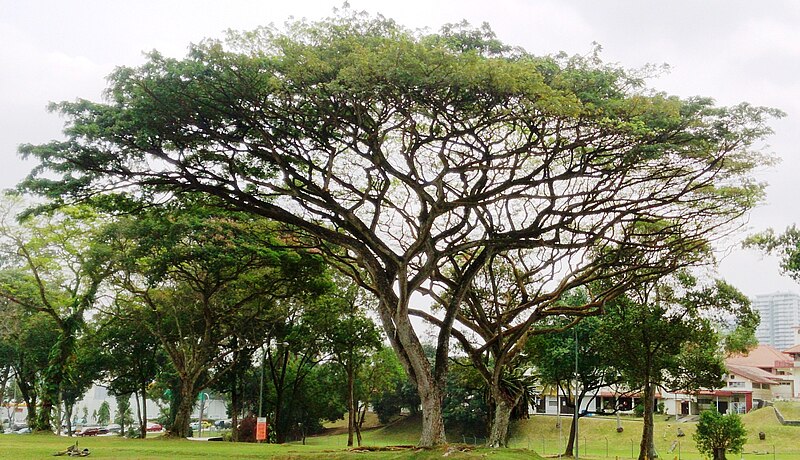Rain tree (Hujan Hujan)
Samanea saman
Description
The The rain tree is a fast-growing tree, and it can grow up to 35 m – 45 m tall. It is called a rain tree because of its leaves fold during rainy days and after five o’clock (allowing rain to fall through the tree) and the occasional shower of sugary secretions from the nectaries on the leaf petioles. It grows best in moist and well-fertile soil but can also easily survive 2 – 4 months of dry weather. This tree is also important for the environment because it provides shade and food for birds, insects and other animals.
Place of origin
Southern Mexico, Guatemala
south to Peru, Bolivia and Brazil.
Ethnobotanical uses
Due to its dense canopy, it is planted in plantations as a shade tree for coffee, cacao and other crops. Medicinally, the bark is used in the treatment of diarrhea and stomach pain while the seeds are used to release sore throat. The pods can be eaten and the pulp can be made into a drink that tastes like lemon. This tree is able to fix atmospheric nitrogen as well as sequestering large amount of carbon making it interesting to fertilize soil and help in tackling climate change.
According to legend, Venezuelan political leader and army general Simón Bolívar, known for leading Venezuela, Colombia, Peru, Ecuador and Bolivia to independence from Spanish monarchy rule, was said to have camped his entire liberation army under a very large Samanea saman tree in Venezuela, now popularly known by the locals as “saman de guerra” meaning “saman of war” in Spanish-Portuguese.
IUCN conservation status
Least Concern (LC)



